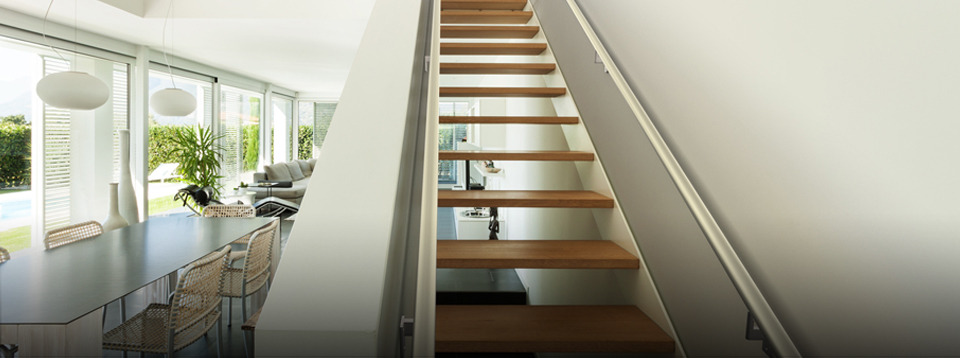Installing a handrail in your home might seem like a complicated process that is better left to the professionals, but it’s something that almost anybody is capable of doing. With a little bit of patience and problem-solving, you can find the perfect handrail for your needs.
To make sure you install your handrail correctly and to ensure that it meets all of your needs, you’ll need to consider a number of factors. Cost, safety regulations, and aesthetics are just a few of these important factors to keep in mind.
Factors to Consider When Installing a Handrail in Your Home
Here are the most important considerations to take when you’re installing a handrail in your house to ensure it’s exactly what you want and need.
Handrail Type
There are multiple different types of handrails, including standard rails and guard rails. Consider the key differences between a handrail vs. guardrail to determine which is the best choice for you.
ADA Compliance
The Americans with Disability Act (ADA) details the health and safety requirements for handrails and guard rails for those with disabilities in the home. Although these rules are mostly for commercial buildings, they’re also important to keep in mind when installing a handrail in your home.
Your handrail should be produced from ADA-approved materials, and it should pass all health and safety regulations.
Cost
The price of installing a handrail depends on how large it is and the materials used to produce it. You’ll need to consider your budget when deciding which type of handrail you want for your home while also considering quality and safety.
Aesthetics
Handrails aren’t just there for functional purposes. You can also use them to improve the interior design of your home.
Whether you go for a traditional wooden rail, a classy glass option, or a durable steel rail, make sure it aligns with the rest of your property’s aesthetics. You can always add metal accents or additional features to finalize the design of your handrail.
Maintenance
Handrails are generally quite low maintenance, but upkeep is still an important consideration to take. You’ll want to choose the right handrail materials that are easy to maintain and will last for several years before needing to be replaced.
You’ll need to learn the basic maintenance steps required to keep your handrail in good condition, regardless of the materials or finish you choose. For example, you’ll need to clean and paint your rail regularly.
Durability
Handrail replacements aren’t just costly; they’re also time-consuming and inconvenient to do when you’re leading a busy lifestyle.
Choosing high-quality materials reduces wear and tear, and makes your investment worth it. Find the most durable materials and the best dimensions for your handrail to maximize its durability and longevity.
You’ll also need to make sure that the materials used for your handrail meet the safety regulations set out by your local authorities. You can find information about this on the local government website.

